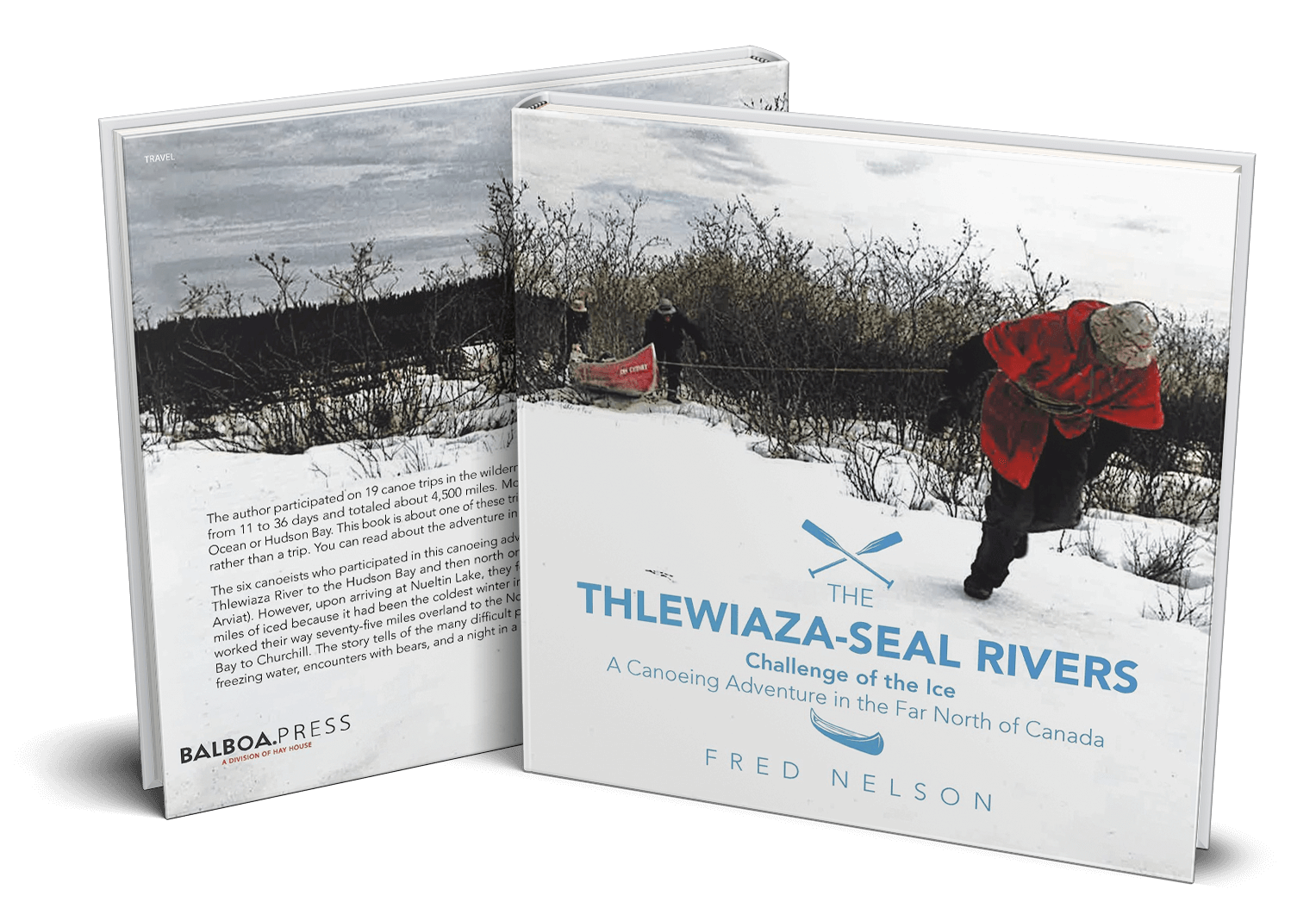about the book
The Thlewiaza-Seal Rivers
Challenge of the Ice

About the book
This book is about six canoeists who planned to canoe down the Thlewiaza River in northern Manitoba, Canada to the Hudson Bay and then north to Eskimo Point (now named Arviat). However, they couldn’t continue the planned trip after six days because Nueltin Lake was still covered with 80 miles of ice! Consequently, the canoeist worked their way 75 miles overland to the Seal River and canoed to the Hudson Bay then south to Churchill.
The planning for this canoe trip began in December 1977 when Brian Gnauck visited his brother Gary for Christmas. Brian and the author had made six wilderness canoe trips together in Canada, but Gary had not participated on any of the trips and wanted to go on a trip with his brother. Together they mapped out a 450-mile trip down the Thlewiaza River from Snyder Lake in Northwest Manitoba to the Hudson Bay and then north to the village of Eskimo Point on the west side of Hudson Bay. The trip would consist of six people in three canoes which is an ideal number for a trip such as this for safety reasons. Brian Gnauck and Carl Schmieder would be in one canoe, the author and his 17-year-old son would be in another canoe, and Brian’s brother Gary with Greg Dufeck would make up the third canoe. All were experienced canoeists and all except Gary had been on several wilderness canoe trips. This would be Gary’s first wilderness canoe trip.
Apprehension grew when the canoeist arrived at the small village of Lynn Lake at the end of the road north in northwest Manitoba. A bush pilot would fly them to Snyder Lake where the river trip would begin, but the locals told them on June 18 that most of the rivers were still frozen over because they had the coldest winter in 40 years. The bush pilot who was to fly the canoeists to Snyder Lake thought the Thlewiaza River was flowing, but was agreeable to fly them to the Seal River in the event the river was still frozen. They flew to Snyder Lake the next day and found that the Thlewiaza River was not frozen so the canoe trip could begin. Six days later the canoeists arrived at Nueltin Lake only to find that any further advance was blocked by eighty miles of ice!
At this point, the canoe trip became a canoeing adventure. This book is about this canoeing adventure in the far north wilderness of Canada and tells how the canoeists solved the problems confronting them almost daily. It describes how the canoeists worked their way seventy-five miles overland from the Thlewiaza River to the Seal River and then south on Hudson Bay to Churchill. The story tells of the many difficult portages on ice and snow, of running extreme rapids on near freezing water, water falls, encounters with bears, and cold rainy days mixed with warm beautiful days. The canoe trip on Hudson Bay became a real ordeal when a polar bear prevented them from camping on the shore. Consequently, they spent a night on Hudson Bay in a storm.
You can also enjoy the adventure, but in the warmth and comfort of your home. If you like exciting stories, this book is for you.
A PASSAGE FROM THE BOOK
These rapids were, by far, the biggest any of us had ever gone through. Both Fred and Gary told of their experience of running these rapids. Gary’s description is first:
The rapids started much the same as the previous ones on the Seal, but it quickly became very rough and unmanageable. I looked ahead and saw Brian and Carl really having trouble. Right then, Greg and I hit some very large standing waves head-on. They were a good eight to ten feet high, and there were five or six of them. Had it not been for the decking, we would have swamped as the water broke over the canoe. We barely had control of the canoe, and the river was tossing us around pretty much at will. The Seal was not about to let us off easily. We straightened the canoe out, and I began to get a sense of the river when I heard Greg yell, “Oh, my God!”
Immediately ahead was the largest set of waves I had run on any river. We were being sucked into a monstrous V-shaped wave. The wave on the right was a ten-to-twelve-foot green giant, dwarfed only by the left wave. The wave on the left was fifteen feet from base to crest. We are going to hit the “V” at the apex, I thought. No, the left wave was much stronger; we were hitting it three-quarters on the port side.
There was no doubt in my mind or in Greg’s; we had bought the farm! Strangely, though concerned, I did not experience the morbid fear of several days earlier in waves considerably smaller.
The wave broke over the Wakemaker II and flipped the canoe over like a toy. It was green all over and cold, sending a shock through my entire system. I was underwater for several seconds and then popped to the surface and experienced a secondary scare. I could not find the stern rope, and my left hand was only lightly resting on the bottom of the canoe. The current was pulling the canoe away from me, and there was nothing I could hang onto. I did not want to lose the canoe at all cost.













